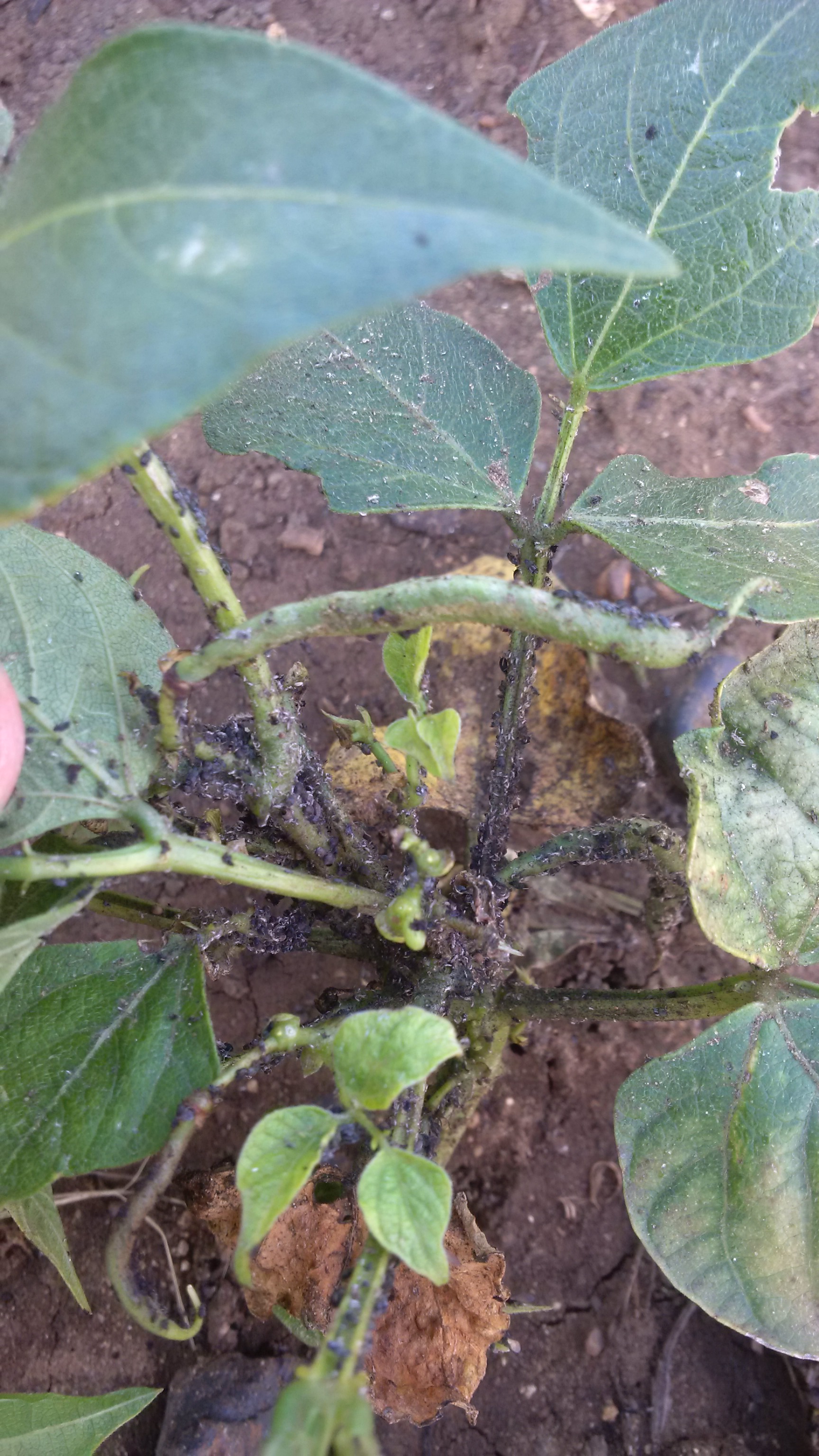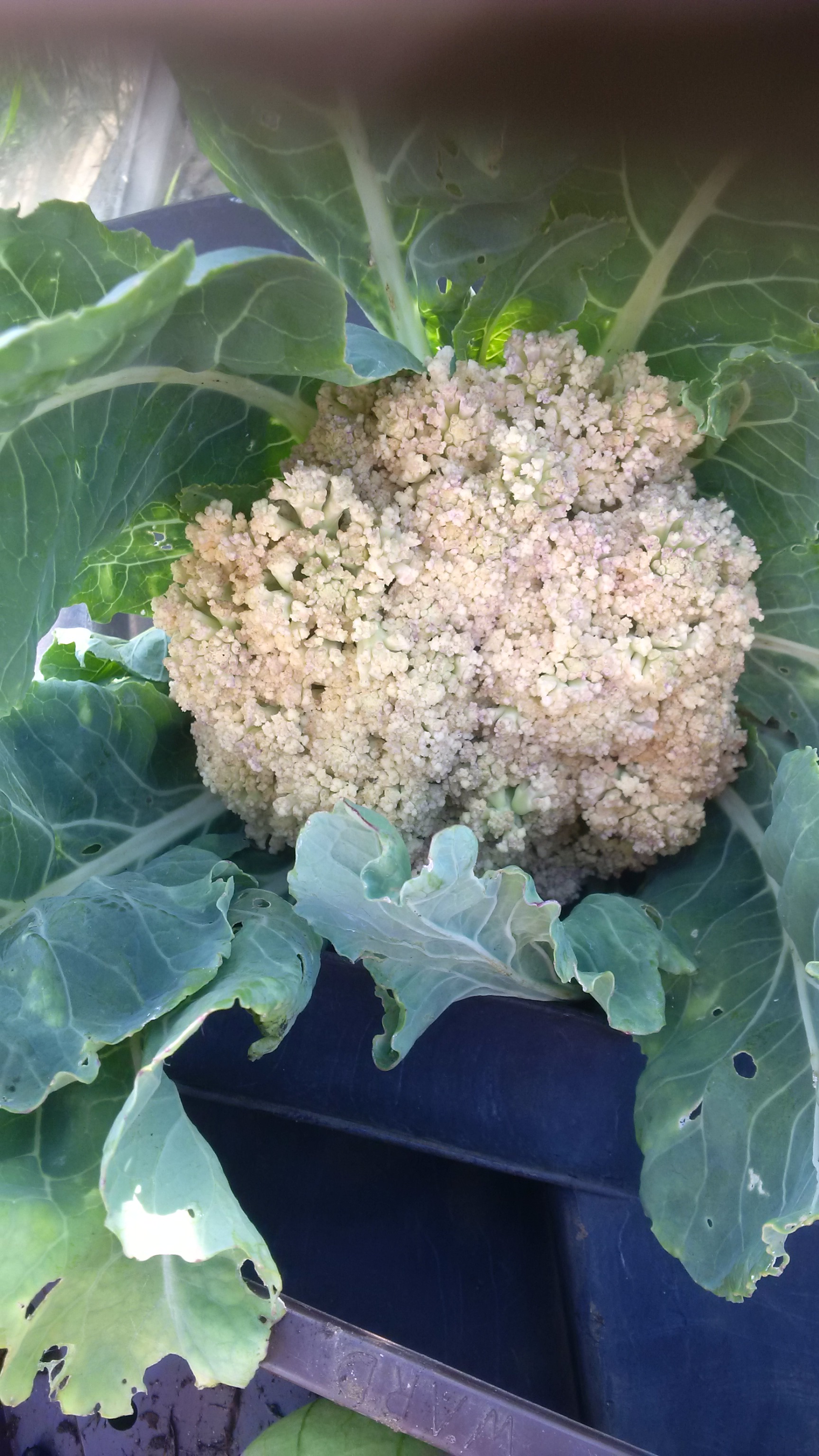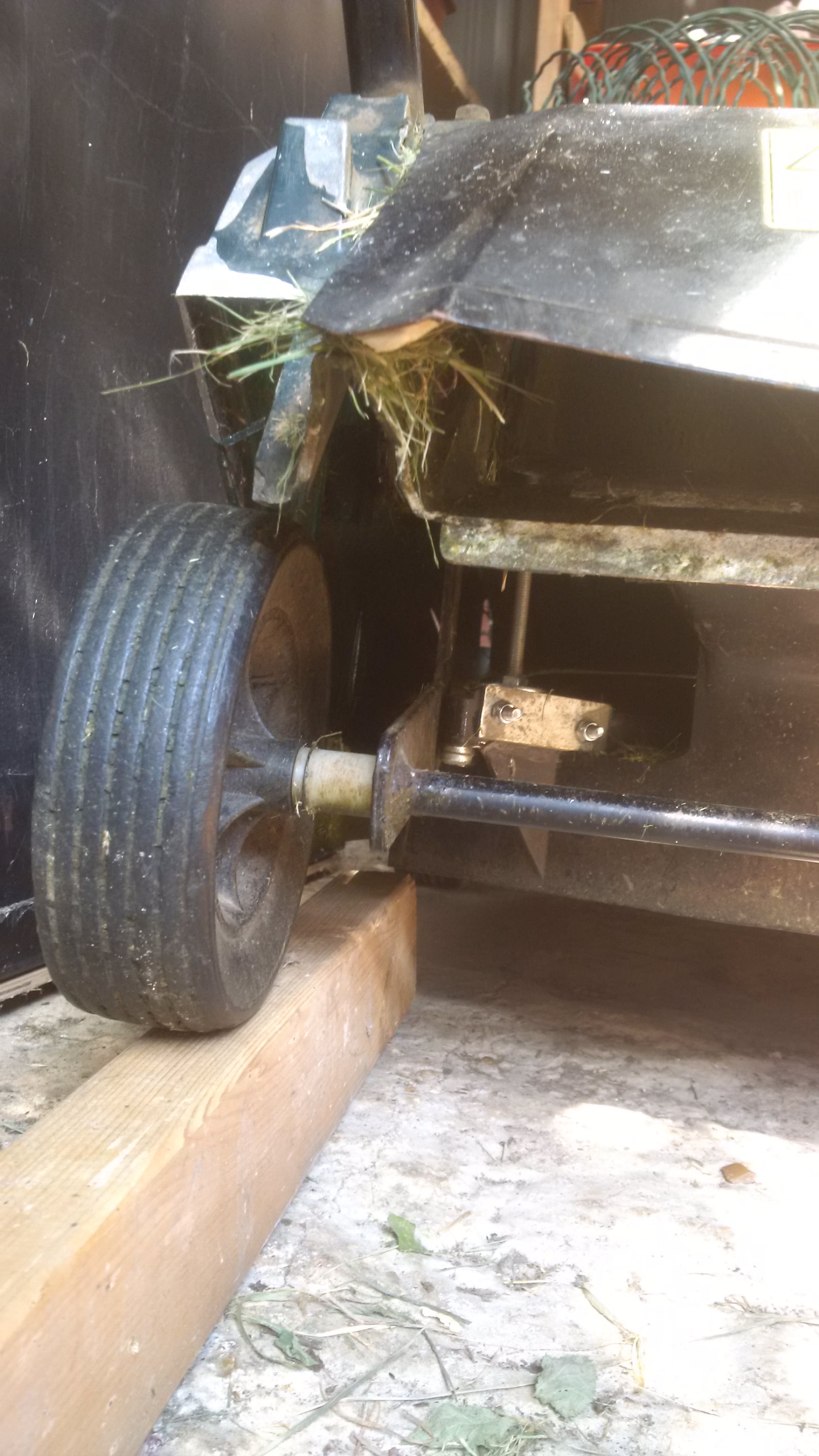One of the features of this summer’s growing season seems to have been the heaviest infestations of blackfly for some time. These small dark coloured aphids appear in late spring or early summer and affect a variety of crops but are most often seen firstly on broad beans before spreading to other leguminous plants and more – we have even seen them on the feathery tops of our sweetcorn which is a first for me! Control is difficult for the organic gardener. Even soft soap sprays will also detrimentally affect ladybirds and their larva which are a major predator of aphids. It is said that a spray made from an infusion of garlic cloves is the answer – as the strong taint it leaves is harmless but deters the aphids. It is interesting to look at the pattern of infestation – some early french bean plants are completely free of blackfly but others – planted a week later have succumbed. Some say that they are attracted to weakly growing plants and indeed those put in the ground during that later week later did experience a significant drought after planting. You may wonder, as I do, how tiny aphids could know which plants are weakly growing! There has been some scientific research done on the tiny electrical signals which plants emit as the result of certain events and growing conditions and it may well be this which ‘attract’ the blackfly to certain plants and not others.

Growing cauliflowers – especially organically – is a significant challenge for the amateur gardener. In season now, they require a fertile, moisture retentive soil and a steady, uninterrupted, long growing season with plenty of moisture at all stages. The curds do not stand well after maturing and are can turn greenish in sunlight. In short – many people don’t bother with them. It is with all this in mind that I show you a picture of a typical cauliflower from my allotment. It won’t win any awards but it is certainly edible!

In case you have been thinking that allotmenting is all about having green fingers, there are occasions when oily fingers are more useful. Between each allotment is a narrow grass path which has to be kept mown – an unspoken, informal, negotiation between adjacent plot holders generally works well here but it does depend on the availability of working machinery. I have an old Hayter Hunter petrol driven mower which I’ve had for years – it was second-hand when I bought it and finally last week it failed in the way that nearly all mowers of that model break – the black plastic moulding holding the rear wheel cracked and broke away. A quick investigation on the internet showed that although many parts for this 1997 mower are still available, of course that particular piece of plastic isn’t! This was particularly annoying as the engine still runs very well after all these years and, uniquely among mowers I have owned, always starts on the second pull after a winter in the shed. Not to be deterred, I managed a repair with a piece cut from a 2mm steel angle bracket and some small bolts so, for now, it lives on to cut another day. Repair, reuse, recycle – all in a days work at the allotments.
